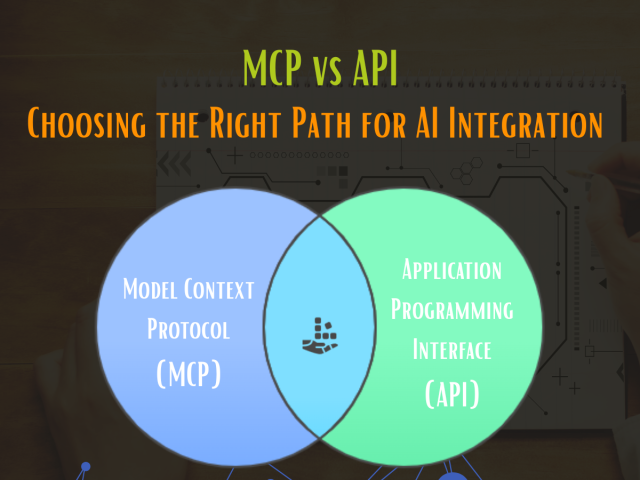Introduction:
In a microservices architecture, large software projects are broken down into small independent, deployable modules.
These modules can be tested independently. Microservices though independent need to communicate regularly to share information about their state. This communication happens via Application Program Interface (API) and Representational State Transfer (REST).
It is ideal for evolutionary systems which may use different types of devices to access the application. Microservices bring scalability, speed up delivery. It along with independent development eases execution.
Why do you need Microservices Testing Tools?
Microservices are costly and there is a need to maintain various server spaces for different tasks. There is an inter-service communication mechanism involved. The business logic is split into the smallest unit. Overall, these activities are needed for releasing microservice to production. The testing prior to release ensures faster and quality delivery. You need proper Microservices Testing Tools to reduce complications and manage the interdependencies of microservices. Everyone needs to control costs and decrease time to market.
Types of testing methodologies used for Microservices:



- Unit Testing: The developers write the tests as the function/feature is expected to run. It ensures that as a whole the software behaves as coded.
- Component Testing: It focuses on running the microservice as a black box. The component testing ensures delivering the requirements. This testing happens in isolation and development teams can make sure that their microservices function accurately.
- Integration Testing: When service virtualization is used to simplify it ensures that each part of the software works perfectly. Integration testing finds issues, it also verifies communication & interactions between components.
- End-to-End Testing: This testingmakes sure that all the components work together to meet the external requirements. It is a must for testing based on user perspective especially if the path is critical. It tests the complete transaction that verifies all microservices.
- Load Testing: It finds the flaws in the design of the software. It also identifies the cause of failure to perform in a particular way. It helps to avoid breakdowns but be aware that implementing load testing too early is an obstacle for microservices.
- Contract Testing: This testing is to manage the contracts between various loosely coupled components. The dependent components involved in the test need to use the latest/specific version of the contract. A description of how components communicate/ interact with each other is mentioned in the contract.
Top 6 Microservices Testing tools you don’t want to miss out on!
Here is the list and their reviews which you can read through.
- InfluxDB is an open-source testing tool written in the Go language. Lightweight and easy to set up. It is used to monitor the range of use cases, performance, security, and log. It is trustworthy and gives greater visibility across all your systems. Influx eases the jobs of engineering & DevOps teams with all the metrics and logs from any environment in a single place. This is one of the Microservices Testing tools used for load testing that helps you identify the bottlenecks. InfluxDB is an easy to run and scalable product. It has the capacity to hold a huge amount of time series data. It is able to perform the most complex queries with perfection. Integration with Grafana, Couch DB, GitHub, Docker, and more. It has a free as well as a usage-based plan that considers data in/out, storage or query count.
- Apache JMeter is preferred by developers and testers for performance and load testing. You can install it on different machines and in different environments. The console is friendly and easy to use. It is advisable to run in non-GUI mode. It is quite easy to configure the test module of the REST API. This open-source format is suitable for SML types of business but can only be used on web applications and APIs. Knowledge of basic Java coding is a must to use this software. It has a lot of features to validate load. You can introduce variables and randomize tests. The parameters can even replicate real-time scenarios. Simultaneous functional & performance testing for microservices is possible. Most of the developers find it great as it hands over the ability to conveniently write complex scripts to test modules. It provides steps to connect with the environment and test as if the system is live with a considerable number of users. Integration with Jenkins, OctoPerf and SpiraTest. You have the option of a free trial and throughout it’s a free tool.
- Gatling is an open-source performance and load testing framework written in Scala. It has a great user interface which makes it easy to use the features. To customize scripts knowledge of Scala coding is a must. Effortlessly integrate with the pipeline as well as local testing. You can define templates and achieve consistent testing patterns across the services. Testers believe it is a powerful API tool. You can record scenarios and it has developer-friendly DSL. Easily create a simulation test and configure the scenario to use a specific number of requests to run simultaneously. It allows us to perform simulations on multiple platforms. Integration into CI/CD pipelines is easy. Reports on the number of users or response time are prompt and reliable. It is free for 1 license per user and the paid version has monthly charges from 99 Euros/1 user to 1380 Euros/10 users.
- Jaeger is an open-source tracing tool by Uber Technologies. Jaeger has tools for Go, Python, Java, JavaScript (Node.js,) & C++. It is useful to monitor microservice-based architectures. It checks thoroughly and troubleshoots systems that have microservices as centrical parts. Jaeger performs root-cause analysis and monitors key service dependencies. You can use it to identify the areas that require optimized performance. Its UI enables users to visualize the distributed tracing data. Skillfully handle distributed transaction monitoring. This microservices testing tool shows a detailed view of how microservices communicate. It is priced at $9.99/month per user to $799 per year.
- Hoverfly an automated free open-source API is best for integration testing. It is lightweight & faster than other tools. Basic knowledge of Java & Python will be helpful. Unreliable test systems can be replaced with API sandboxes. You can know the reaction of APIs to specific events, e.g., latency in the network. This microservices testing tool performs the test calls between microservices by simulating communications. Later on, it captures the requests & responses in proxy mode. It helps to confirm whether or not the microservices work as expected. Scale testing with performance requirements of your tests as demand increases.
- Pact a distributed testing framework that honors contracts for testing HTTP & message integrations. It supports JavaScript, JVM, Go, Ruby, PHP, Python, .NET, Swift and more. It checks that the Web App and API are compatible yet need not be tested together. It ensures that apps meet the criteria of a customer-driven contract. Pact is among the Microservices Testing Tools where the solutions command when and how they need data. Additionally, this service does a continuous test to align with the contracts. The Pact tests are unique and are written just like unit test with access to code, still having the ability to reduce the large unit tests. These tests work efficiently as there cannot be any drift from the actual implementation. The tool is free/5 contracts, $99/25users, and $499/50 users.
Pointers for Testing Microservices using Microservices Testing Tools:
- Consider each service as one software module to test. Detailed testing for the module should be similar to the new code testing.
- Success and failure scenarios should be tested with equal contemplation.
- Perform testing across stages and if needed mix and match testing practices.
- Dependencies can be used to connect a test instance of a microservice to another and jointly test them.
- It is possible to test a microservice with any other microservice that exists in production.
Conclusion:
You should select Microservices Testing Tools based on your test automation needs. There are multiple tools available in the market that help to track, monitor, and improve operations. You may opt for commonly used or unique tools as per your requirement. Clarity on what are you focused on for testing matters a lot. The performance requirement and the number of third-party integrations have a greater influence on testing. The base of your decisions comprises the number of microservices and frequency of deployment. The aim is to filter out maximum bugs, to serve the customers your best. The costs of Microservices Testing tools and complexity in the functionality of each microservice go hand in hand.











